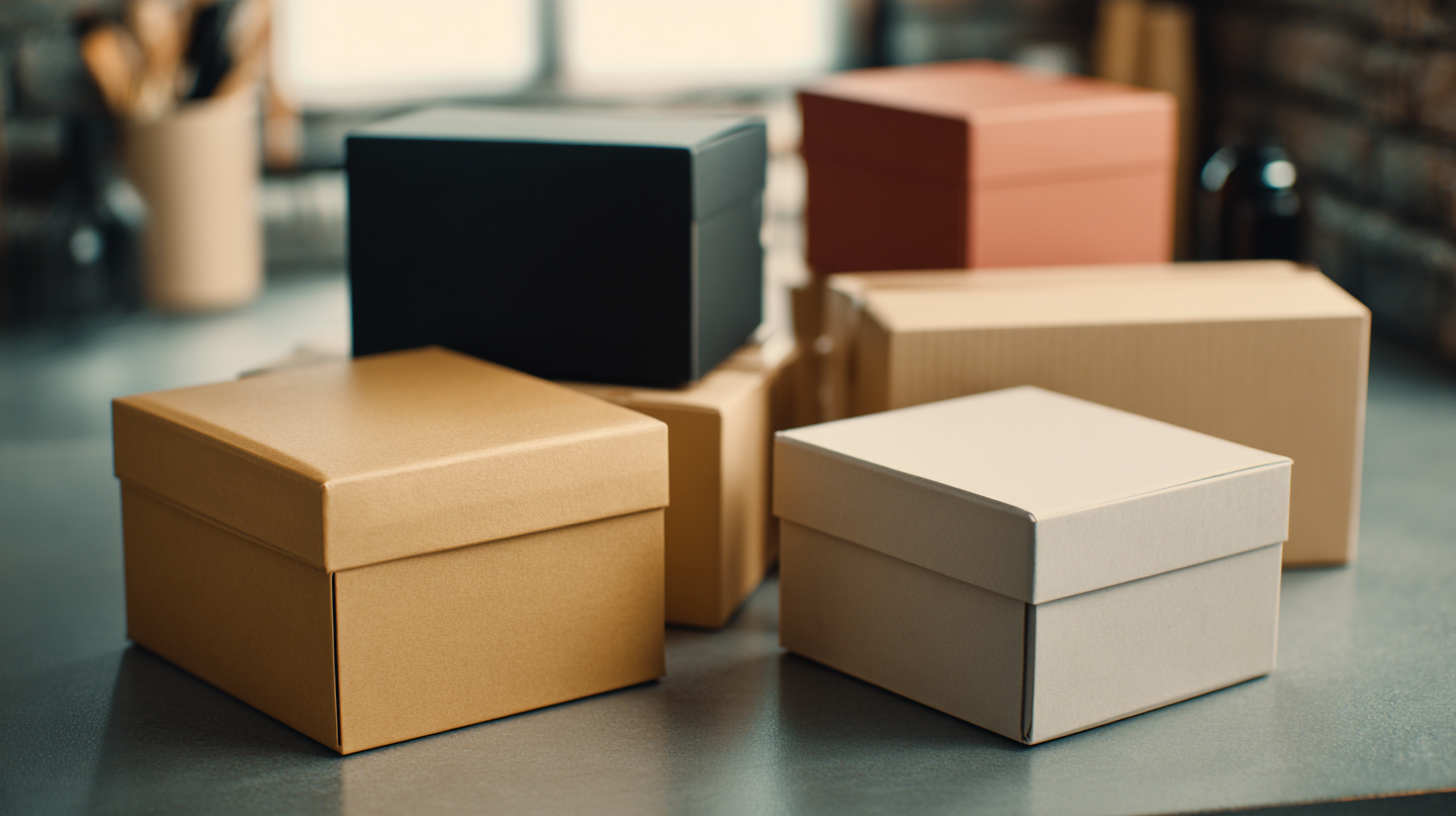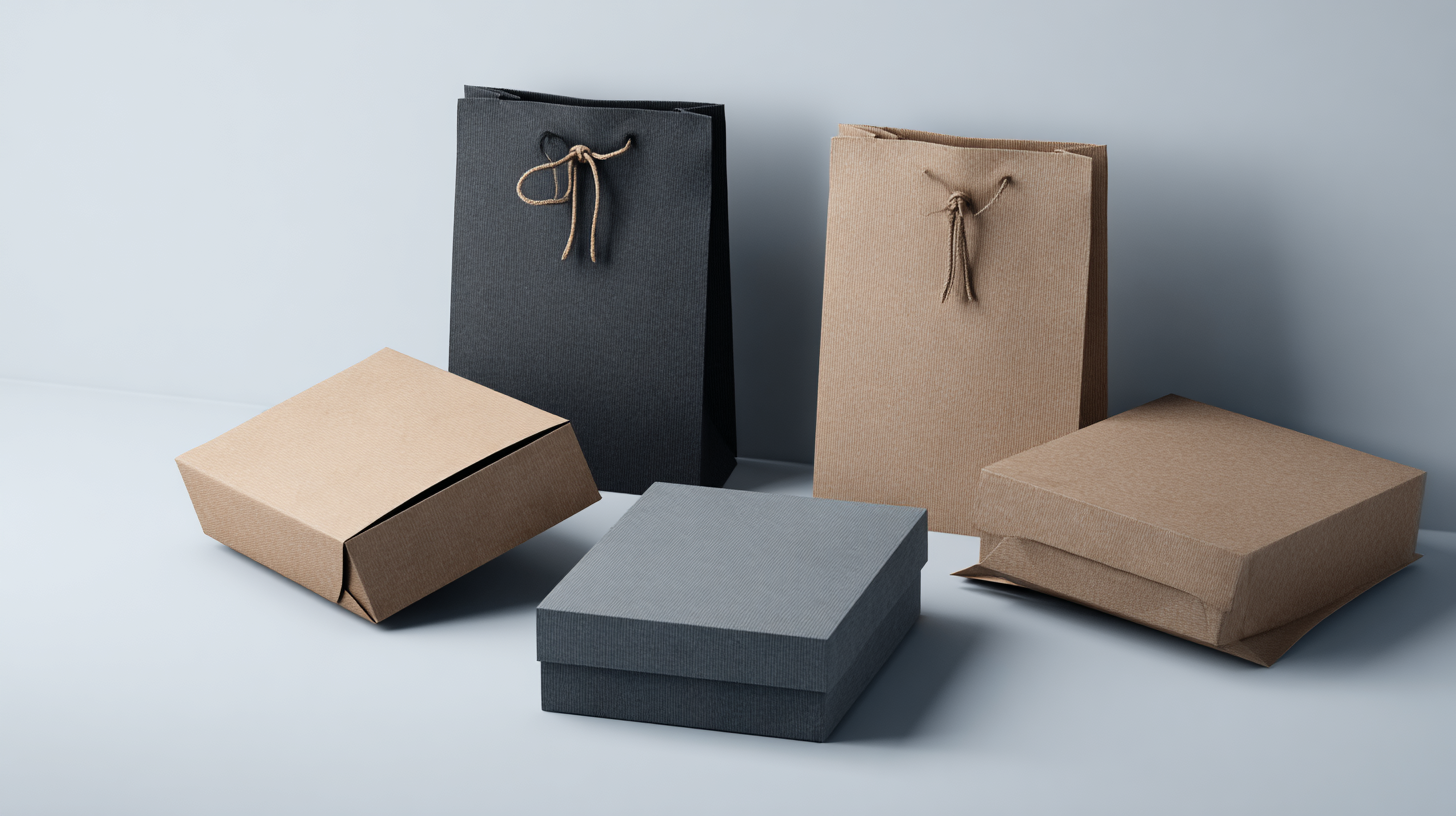Unlock the Power of High Quality Packaging: Elevate Your Brand's Image and Appeal
In today's competitive marketplace, the significance of "High Quality Packaging" extends far beyond mere aesthetics. According to a report by Smithers Pira, approximately 72% of consumers say that packaging design influences their purchasing decisions, while a survey by Deloitte reveals that well-designed packaging can boost sales by up to 30%. High Quality Packaging not only enhances the visual appeal of a product but also reinforces brand identity and increases perceived value in the eyes of consumers. Additionally, 63% of consumers are willing to pay more for sustainable packaging options, highlighting the importance of aligning packaging strategies with environmental considerations. As brands strive to elevate their image and appeal in a crowded landscape, investing in High Quality Packaging is not just a choice, but a necessity for standing out and attracting loyal customers.

Harnessing the Impact of Quality Packaging on Consumer Buying Decisions
In today's competitive market, the significance of quality packaging cannot be overstated, especially as it plays a pivotal role in consumer buying decisions. Research indicates that the global packaging paper market was valued at approximately $43.50 billion in 2023, with projections showing a substantial growth to $58.11 billion by 2031, reflecting a compound annual growth rate (CAGR) of 3.75%. This growth underscores the increasing importance of visual appeal in attracting consumers. Brands that invest in high-quality packaging not only enhance their image but also improve consumer trust and inclination to purchase.
Moreover, the rise of the fast-moving consumer goods (FMCG) packaging market, expected to soar from $823.83 billion in 2024 to $1.34 trillion in 2032, illustrates the direct correlation between packaging quality and consumer preference. As consumers lean towards visually appealing and well-designed products, businesses must recognize that packaging is not merely a vessel but a vital component of their marketing strategy. Effective packaging can influence consumer perceptions and drive sales, making it an essential factor for brands aiming to elevate their market presence.
Impact of Packaging Quality on Consumer Purchasing Decisions
Exploring the Correlation Between Packaging Aesthetics and Brand Perception
The aesthetics of packaging play a crucial role in shaping brand perception. Consumers often form an opinion about a product within seconds of seeing its packaging. This instantaneous judgment can significantly influence their buying decisions. A well-designed package communicates quality and attracts attention, making it essential for brands to invest in high-quality packaging that reflects their values and resonates with their target audience.
Tips for enhancing packaging aesthetics include selecting colors and materials that align with your brand identity. Color psychology is powerful; for instance, blue evokes trust, while red can stimulate excitement. Additionally, consider using sustainable materials to not only appeal to eco-conscious consumers but also to elevate your brand’s image as socially responsible. Unique shapes or structural designs can also set your product apart on the shelf, creating a memorable presence.
Finally, consistency is key. Ensure that your packaging design is consistent across all products and platforms to build brand recognition. Regularly re-evaluating your packaging aesthetics can also keep your brand relevant and fresh in the minds of consumers. Investing in high-quality packaging is not just an aesthetic choice; it's a strategic move that can significantly enhance brand perception and consumer loyalty.

Quantifying the Influence of Sustainable Packaging on Millennial Purchasing Behavior
Sustainable packaging has become a critical factor influencing millennial purchasing behavior. According to a recent Nielsen report, 73% of millennials are willing to pay more for sustainable products, highlighting how eco-friendly packaging resonates with this demographic. This emphasis on sustainability reflects broader consumer trends, where brands that adopt responsible practices not only enhance their image but also capture the loyalty of environmentally conscious shoppers.
Tip: Consider incorporating recycled materials into your packaging design. This can not only reduce your environmental footprint but also attract millennial consumers who prioritize sustainability in their purchasing decisions.
Moreover, a survey by McKinsey shows that 60% of millennials prefer brands that contribute to environmental causes. By using high-quality, sustainable packaging, companies can significantly elevate their brand appeal. As sustainability becomes a key determinant in consumer choices, brands that lead with eco-friendly practices not only differentiate themselves in a saturated market but also build a stronger emotional connection with millennial shoppers.
Tip: Utilize clear and transparent labeling on your sustainable packaging to reinforce your commitment to environmental responsibility. This transparency can enhance trust and drive deeper connections with your audience, ultimately resulting in increased sales and brand loyalty.
Unlock the Power of High Quality Packaging: Elevate Your Brand's Image and Appeal - Quantifying the Influence of Sustainable Packaging on Millennial Purchasing Behavior
| Dimension | Metric | Impact on Purchasing Behavior (%) |
|---|---|---|
| Quality of Packaging | Perceived Value | 68% |
| Sustainability | Purchasing Intent | 75% |
| Design Appeal | Brand Recognition | 70% |
| Functionality | User Experience | 60% |
| Brand Story | Emotional Connection | 65% |
How Effective Packaging Design Can Increase Brand Recognition by Up to 80%
 Effective packaging design is a crucial element in establishing a strong brand identity. Research shows that up to 80% of brand recognition can be attributed to visual perceptions created by packaging. When consumers encounter a product on the shelf, their first interaction is often with its packaging, which not only protects the product but also conveys essential information and emotional appeal. Brands that invest in thoughtful, aesthetically pleasing, and functional packaging are more likely to stand out in a crowded market, thereby increasing their visibility and desirability.
Effective packaging design is a crucial element in establishing a strong brand identity. Research shows that up to 80% of brand recognition can be attributed to visual perceptions created by packaging. When consumers encounter a product on the shelf, their first interaction is often with its packaging, which not only protects the product but also conveys essential information and emotional appeal. Brands that invest in thoughtful, aesthetically pleasing, and functional packaging are more likely to stand out in a crowded market, thereby increasing their visibility and desirability.
Moreover, high-quality packaging can evoke an emotional connection with consumers, influencing their purchasing decisions. Unique shapes, vibrant colors, and innovative materials can stimulate curiosity and attract attention. Additionally, packaging that reflects a brand’s values—such as sustainability or luxury—can lead to greater consumer loyalty and trust. By creating a memorable unboxing experience, brands can turn customers into brand advocates, further amplifying recognition and enhancing overall market presence.
The Role of Innovative Packaging in Enhancing Product Differentiation and Market Share
Innovative packaging plays a crucial role in product differentiation and can significantly impact a brand's market share. In a crowded marketplace, where consumers are bombarded with countless options, packaging serves as the first point of interaction between the product and the consumer.
High-quality, creatively designed packaging not only attracts customer attention but also conveys the brand's values and promises. Unique packaging can evoke emotions, tell a story, or even communicate sustainability, setting a brand apart from competitors.
Moreover, effective packaging can enhance functionality and user experience, leading to higher customer satisfaction. For instance, easy-to-open designs or eco-friendly materials appeal to modern consumers who prioritize convenience and sustainability. By focusing on innovative packaging solutions, brands can create a strong identity and foster customer loyalty. The right packaging not only differentiates a product but also becomes an essential component of the overall marketing strategy, driving both sales and brand recognition in an increasingly competitive environment.
Related Posts
-

5 Best Strategies for Innovative Product Packaging Solutions in 2023
-

Exploring the Top Trends in Food Packaging Design: A Comprehensive Comparison
-

Exploring Unique Attributes of Best Bottles and Packaging for Varied Product Applications
-

10 Essential Tips for Achieving Quality Packaging in Your Business
-

7 Pro Tips for Elevating Your Product Packaging Design Strategy
-

Ultimate Checklist for Finding the Best Packaging Bottles for Your Business
CONTACT US
|
